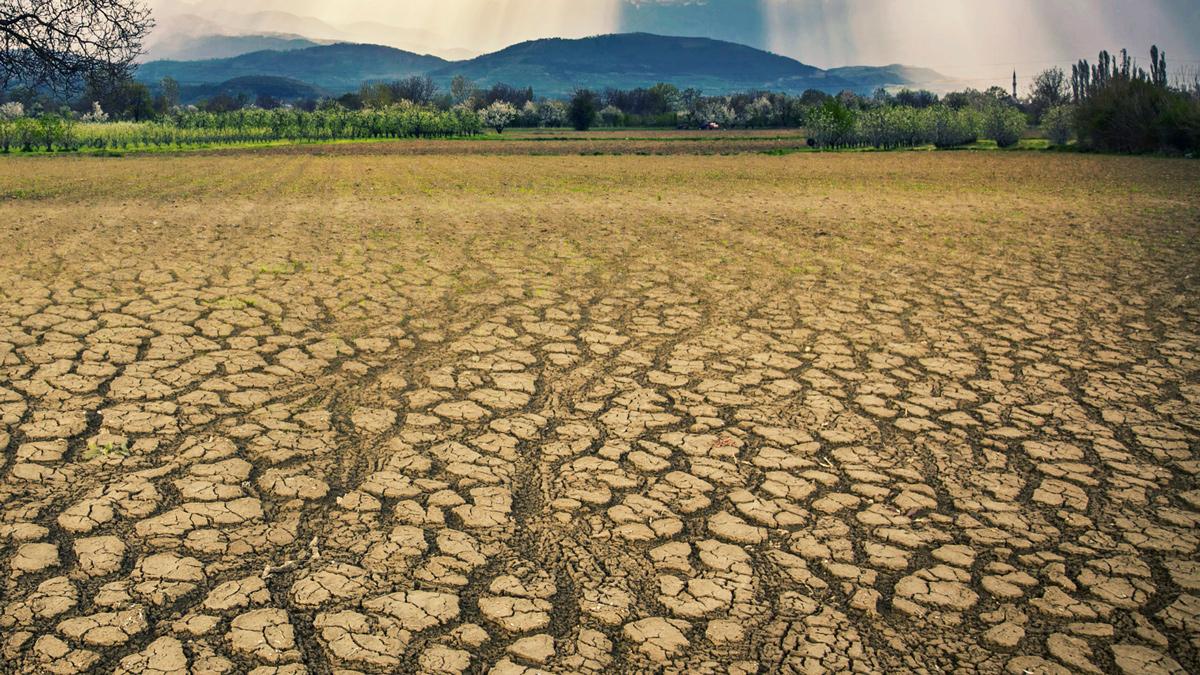Climate crisis: the greatest health threat of our time

Across all sectors and throughout the world, organisations are striving to achieve the United Nations Sustainable Development Goals (SDG). However, to achieve these, we need to think holistically – considering how the goals are interconnected.
Over recent years, we’ve seen growing concerns about climate change and its link to good health and wellbeing. The climate crisis is now regarded as the greatest public health threat of the 21st century – greater even than the COVID-19 pandemic. In addition to its devastating impact on the environment, climate change is responsible for significant morbidity and mortality across the globe.
Current figures from the World Health Organization (WHO) show that approximately 14 million people die annually from environmental health risks, equivalent to nearly one in four global deaths.1 Air pollution contributes to seven million premature deaths each year and people in more than 90% of cities breathe polluted air that is detrimental to their health.2,3 Furthermore, extreme temperatures are increasing hospital admission rates, as well as heat-related deaths in people with underlying chronic illnesses such as cardiovascular and respiratory diseases.4
A vicious cycle
The link between the climate crisis and chronic diseases is complex – climate change is driving up rates of chronic diseases, while the care of these debilitating, and often life-long conditions also significantly contributes to the greenhouse gas (GHG) emissions from the healthcare sector. A fundamental shift in how we view, as well as treat, disease moving forward will be key to reducing the future burden on our healthcare systems and providing more sustainable patient care.
We’re already seeing health systems struggling to manage the growing pressures from ageing populations who are living longer with complex medical needs, the ongoing aftermath of COVID-19, and now the additional strain from the health consequences of climate change. As Dr. Tedros Adhanom Ghebreyesus, Director-General of the WHO put it: ‘The world’s health systems do not deliver health care, they deliver sick care.’ We need to change current mindsets and processes, acting more decisively on chronic diseases, seeking opportunities for earlier diagnosis and more effective interventions, while leveraging solutions that have a lower environmental footprint. We must stop diseases from progressing by harnessing novel technologies, such as digitisation and telemedicine, to lower the GHG emissions from patient care and avoid hospitalisation that drives the majority of costs associated with chronic diseases.
Poor health is estimated to reduce global GDP by 15% each year.5 By lowering the burden of chronic diseases we will not only improve patient outcomes, but will alleviate strains on health systems, offering broader benefits to economies and society through increased work productivity and savings from high-cost care.
Promoting end-to-end sustainability
Despite the inextricable link between human and climate health, many healthcare systems are failing to understand, monitor, and take action to reduce their environmental impact. A recent report from the Intergovernmental Panel on Climate Change (IPCC) emphasises that any investments in GHG reductions will be equalled, if not outweighed, by the economic benefits that will be seen through healthier populations.6 As a sector that is responsible for 5% of global GHG emissions, it is essential that all those involved in the delivery of healthcare come together to harness innovation to tackle the climate crisis.
We must consider how we can lower the environmental impact of drug discovery, development, delivery and use – working from the lab to the patient – as well as ensuring the efficient, circular use of water and other natural resources. This means making sustainable choices at all stages along the value chain, continuously seeking new ways to ensure responsible sourcing, consumption, production, and disposal.
Sustainable healthcare in practice
Let’s take respiratory diseases as an example – air pollution is considered one of the greatest environmental risks to population health. The WHO estimates that a fifth of outdoor air pollution-related premature deaths are a result of complications from chronic obstructive pulmonary disease (COPD) and acute lower respiratory infections. Addressing air pollution, the second highest risk factor for chronic diseases, is key to protecting public health.7
Innovative collaborations between pharmaceutical companies and health authorities are exploring ways to reduce the environmental impact of respiratory care, seeking to improve patient outcomes, and encouraging the industry towards a goal of net zero emissions. AstraZeneca has launched the SENTINEL Project alongside the NHS, Academic Health Science Networks, and partners in Hull, UK, to improve respiratory care by addressing over-reliance on blue ‘rescue’ inhalers (SABA) by asthma patients.
Since the project started in 2020, there have been an estimated 44,275 fewer ‘rescue’ inhalers issued for the treatment of asthma, equating to a saving of 1,240 metric tonnes of CO2e, and equivalent to 1,550 transatlantic flights from the UK to New York. The project is currently in place in a quarter of all primary care networks in England, and AstraZeneca is now rolling out the next wave of the programme, SENTINEL Plus, across the country and, eventually, internationally.
Driving change together
We’re now at a crucial juncture where bold science-driven action will be essential to mitigate the climate crisis. No organisation will succeed alone, so our goal must be to work together to achieve decarbonisation. We’re already seeing positive commitments being made across the life sciences sectors, with companies pledging their support and announcing ambitious targets to reduce the environmental impact of healthcare.
Furthermore, collaborations such as the Sustainable Markets Initiative Health Systems Task Force, established by His Majesty King Charles III in his former role of The Prince of Wales and championed by AstraZeneca’s CEO Pascal Soriot, will become increasingly important for achieving a system-wide transition to net zero, patient-centric health. Bringing together leaders from global pharmaceutical companies, healthcare systems, multilateral and policy institutions, academia, and organisations like the WHO, the Task Force is taking scalable action to help increase the resilience and sustainability of healthcare.
Ultimately, a healthy patient will have a lower environmental footprint – less likely to require hospitalisation and ambulatory care, resulting in lower GHG emissions and reducing pressures on our already stretched healthcare systems. By taking bold action to tackle the climate crisis and stem the growing rates of chronic diseases, we will be one step closer to a healthier future for people, society, and the planet.
References
- World Health Organization. Environmental health. Available at: https://www.who.int/health-topics/environmental-health#tab=tab_2
- World Health Organization. Air pollution. Available at: https://www.who.int/health-topics/air-pollution#tab=tab_2
- Watts N, Amann M, Arnell N, et al. The 2018 report of the Lancet Countdown on health and climate change: shaping the health of nations for centuries to come. Lancet. 2018;392:2479-2514.
- Romanello M, Di Napoli C, Green C, et al. The 2022 report of the Lancet Countdown on health and climate change: health at the mercy of fossil fuels. Lancet. 2022;400:1619-1654.
- McKinsey & Company. Prioritizing health: A prescription for prosperity. Available at: https://www.mckinsey.com/industries/healthcare/our-insights/prioritizing-health-a-prescription-for-prosperity#section-header-4
- IPCC. AR6 Synthesis Report: Climate Change 2023. Available at: https://www.ipcc.ch/report/sixth-assessment-report-cycle/












